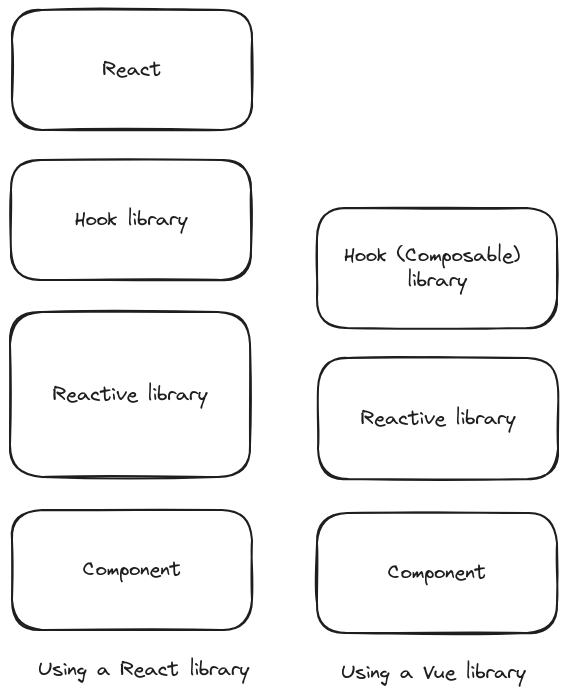Using Vue libraries
The Unison (Vue) framework leverages most of the Vue Composition API, allowing you to use Vue libraries with minimal configuration in your React projects.
Using Vue Plugins
Some Vue libraries require attaching a plugin to your application. Here’s how you can integrate a Vue plugin using the Unison (Vue) library in React :
- Create an App Context
const app = createApp();- Use the Vue Plugin
app.use(vuePlugin);- Wrap Your React App with
AppProvider
root.render(
<AppProvider app={app}>
<App />
</AppProvider>
);Here’s an example using Pinia as the Vue state management library:
import ReactDOM from 'react-dom/client';
import { createPinia } from 'pinia';
import { AppProvider, createApp } from '@unisonjs/vue';
const pinia = createPinia();
const app = createApp();
app.use(pinia);
const root = ReactDOM.createRoot(document.getElementById('root')!);
root.render(
<AppProvider app={app}>
<App />
</AppProvider>,
);But why using vue libraries in a React project ???
Remove overhead
The Unison framework leverage the integration of React Hook however to do so, no only it needs a extra work to enable state tracking and notify changes but also it prevents the Unison framework to overlap React mechanism.
Using Vue libraries instead of React libraries can significantly reduce overhead by eliminating the need for React primitives such as useState, useEffect and so on.
Details

Vue code-sharing
Using Vue libraries can be advantageous for code-sharing between Vue and React projects. For example, you might use Vue for your web app and React Native for your mobile app, leveraging a shared state management library like Pinia across both platforms. This approach allows you to maintain a consistent state management solution while only needing to adapt the templating.